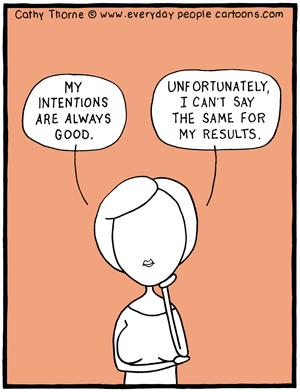
Five frogs sat on a lily pad; one decided to get off. Now how many frogs are on the lily pad?
We mustn’t confuse intentions, resolutions, plans, and decisions with action.
- Intending to do something doesn’t change anything.
- Planning to do something is not synonymous with doing it.
- Deciding to do something is not the same as doing it.
- Action is the sine qua non of change and the precursor to progress.
Granted, planning and action are mutually dependent. Action without planning can be ineffective and inefficient. Abraham Lincoln said, “Give me six hours to chop down a tree and I will spend the first four sharpening the axe.” Good planning increases the effectiveness of action. But planning without action is just wishful thinking.
Business consultant Peter Drucker said, “Ideas don’t move mountains; bulldozers move mountains, but ideas show where the bulldozers have to go to work.” Until you hear the rumble of the bulldozer and feel the resistance of the dirt, you haven’t bridged the gap between planning and action.
Planning, by itself, can be deceptively easy—even enjoyable. Jerry Brown, former governor of California, said, “The reason everybody likes planning is that nobody has to do anything.” All great ideas must inevitably evolve into work.
After you have planned, it’s helpful to immediately do something toward reaching the goal; this kickstarts momentum. Indira Gandhi, former prime minister of India, said, “Have a bias towards action – let’s see something happen now. You can break that big plan into small steps and take the first step right away.” All projects can be broken down into small, actionable tasks. Identify one and get started.
Maintain proper balance. Plan your work and work your plan.
I ask again: how many frogs are on the lily pad?
